Uzbek lemon - differences and features of cultivation
The Uzbek, sometimes it is called the Tashkent or Azerbaijani lemon is a vivid example of a situation when the usual form surprises with its unusual content.
How Uzbek lemons differ from other citruses and how to grow them at home - read our material.
The content of the article
The history of the origin of the Uzbek lemon

Attempts by Soviet scientists to grow lemons under the hot sun of Uzbekistan began in the late 1930s.
However, the sharply continental climate with frosty (up to -18 - 20 ° C) winters did not allow subtropical plants to survive and produce crops.
By 1960, work on the selection of citrus fruits suitable for cultivation in Central Asia was deemed unpromising. But the enthusiasm and belief in the success of the breeder scientist Zainiddin Fakhrutdinov did not give an end to Uzbek lemons.
Creation of the "Tashkent" variety
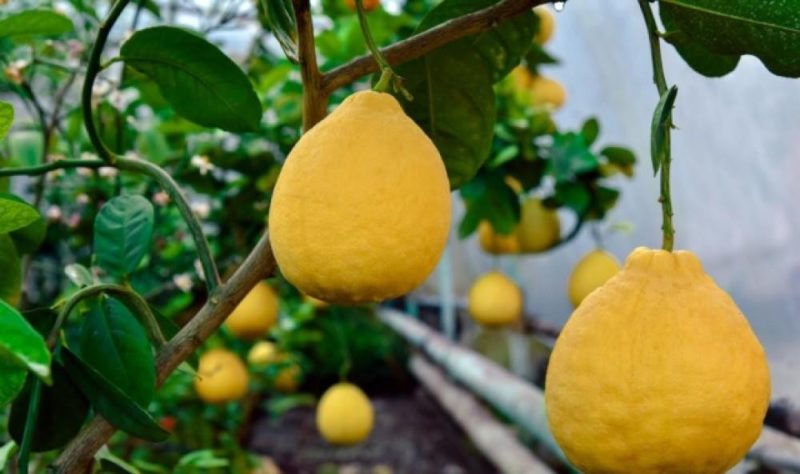
Experimenting with the frost resistance of citrus, the breeder grafted cuttings of the unpretentious Meyer variety onto the Novogruzinsky variety, which is successfully grown on Georgian and Abkhaz farms.
Interesting! Citrus "Meyer" is a hybrid of orange and lemon, exported from China by the American agronomist and businessman F. Meyer. In the USSR, the hybrid took root on the Black Sea coast of the Caucasus. Grafting "Meira" on a wild-growing citrus shrub with tripoliata made it even more cold-resistant and immune to the tristeza virus.
A few years later, young trees gave their first harvest. The agronomist noticed that on one of the shoots the fruits were brighter and more aromatic, their taste was also noticeably different from the usual lemon.
This interesting specimen, propagated by Uzbek scientists, is now known as the Tashkent lemon variety.
Description of Uzbek lemon

The Tashkent variety is referred to as dessert-table. Delicate fruits easily spoil during transportation. This explains the absence of Uzbek lemons on the shelves of Russian stores.
Crown
The tree is undersized, 2-2.5 m high. The branches are curved, located almost at right angles to the trunk.
The crown, as a rule, is not cut off.
Bark
The bark of the trunk and old branches is olive-gray. Young shoots are green in color.
Leaves
Leaves are bright green medium-sized, narrow, slightly serrated along the edges. The leaf plate is smooth, shiny, without pubescence.
Flowers
The plant blooms profusely. Flowers of medium size, form inflorescences. The petals are pinkish on the outside.
Blooming tree exudes an intense lemon scent.
Fruit
The main difference from other citrus fruits is in the fruits.
Lemons are small oval, weighing no more than 100 grams. The orange peel is thin (0.2 to 0.5 mm), smooth, oily to the touch.
The flesh is golden yellow, juicy. The taste is sweet and sour, reminiscent of orange.
Spread and harvest season
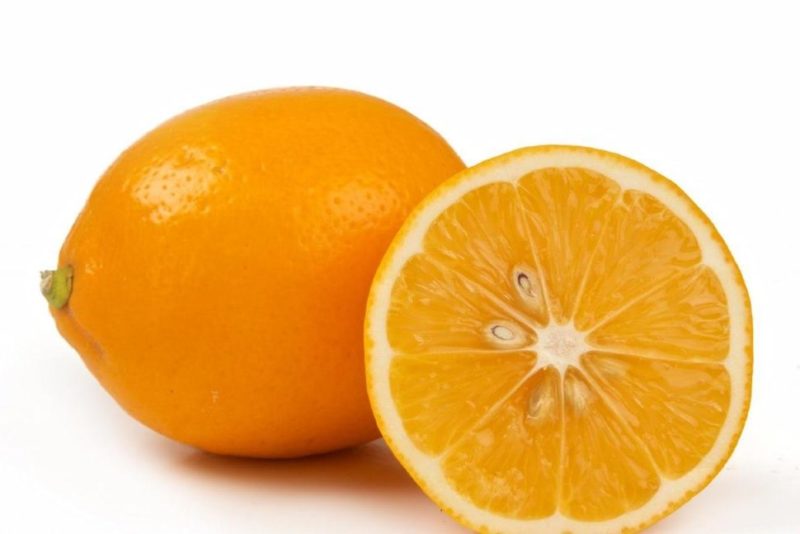
The main place for growing Uzbek lemon is the Tashkent lemonarium.
There are special conditions for thermophilic trees.
The seedlings are grown in well-fortified trenches 1 meter deep and about 1.5 meters wide. In winter, the trenches are covered with glass frames, if necessary, they are insulated with a layer of straw or reeds.
Interesting! At temperatures below freezing, lemon trees go into a dormant state and often shed their leaves, so that 1 - 2 months without sunlight is not harmful.
Such agrotechnology is suitable for the cultivation of lemons in the Crimea or the Transcaucasus.
In more northern regions, citruses will only grow in a greenhouse.
When lemons ripen in Uzbekistan
The grafted trees begin to bear fruit in 2-3 years, seedlings (from the stone) - in 7-8 years.
Lemon blooms in March - April. Fruits grow for 5-6 months and ripen for another 30-35 days.
Harvesting usually takes place in October - November.
With the onset of frost, the fruits fall off. At temperatures above freezing, lemons can hang on the branches until spring.
How to grow a Tashkent lemon at home
Lemon seedlings can be purchased in the lemonarium of the educational and experimental farm of the Ufa Forestry Technical School.
Requirements for growth conditions
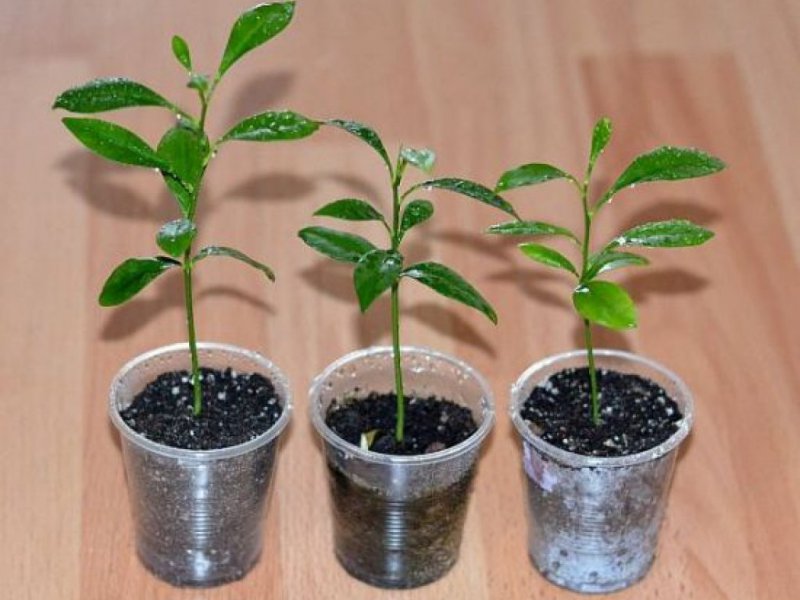
Before purchasing a lemon sapling, take care of a suitable place for its placement, taking into account the requirements for temperature, humidity and light.
Temperature
Active growth and fruiting occurs at 20-22 ° C. Lemon, like other citrus fruits, needs a period of dormancy, which occurs when the temperature drops to 10-14 ° C.
Humidity
Lemon is picky about air humidity. Dry air causes leaves, buds and ovaries to fall off.
Experienced flower growers recommend sprinkling the crown with water at room temperature up to twice a day, and also placing the plants away from heating appliances. If this is not possible, place a container of water for evaporation next to the pot or on the surface of the soil.
Lighting
Lemon is a short-day plant that reacts painfully to any changes in light. Plants should not be rearranged unless necessary.
From October to March, it is useful to illuminate lemon trees with phytolamps for 4-5 hours daily.
Important! Plant pots are best placed in rooms that face south or southeast.
The soil
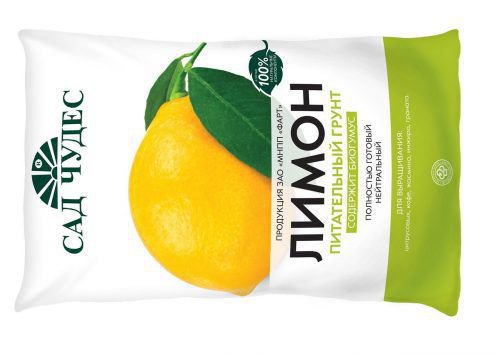
Growing lemons requires neutral, loose soil that allows water and air to pass through well.
Optimal potting mix for citrus fruits:
- 45% turf;
- 25% humus;
- 25% leaf land;
- 5% washed river sand.
Before planting, the soil must be disinfected with a 1% solution of potassium permanganate or by calcining in the oven at 100-150 ° C.
Planting and leaving
Optimal time for landing indoor lemon - February or early March.
Rooted cuttings are planted in small containers with a diameter of 7-8 cm with drainage holes. When roots appear from the drainage hole, the plant transplanted into dishes with a diameter of 3-4 cm.
Adult plants are transplanted every 2-3 years, each time increasing the diameter of the container by 10-20 cm.
Crown formation
The top of the seedling at the age of one year is pinched after 6 leaves at a height of about 20 cm.
After a year, 4-5 of the grown shoots are left, evenly spaced around the perimeter. They are pinched after 5 leaves. Further, 2-3 shoots are left on each of the branches, pinching with too much growth.
Watering

Moderately moist soil is most favorable for lemon.
For irrigation use settled tap water or water from natural sources: melt, rain or well.
Slow, abundant watering is preferred until moisture comes out of the drain holes. The next irrigation is carried out when the topsoil dries out to a depth of 1-2 cm.
It is better to water the lemon in the early morning or evening.
Top dressing
Each period of growth requires its own complex of nutrients.
For indoor lemons, liquid dressings are used. They are applied to slightly moist soil in the amount of the usual watering.
During the period of active growth (in early spring), one of the nitrogen fertilizers is used:
- 30 g of ammonium nitrate is dissolved in 1 l of water, before use, the resulting concentrate is diluted in a ratio of 1:10;
- cow manure is poured with water in a ratio of 1: 1 and insisted for 14 days, before use, 10 parts of water are added to 1 part of slurry;
- chicken droppings are infused with water for 2 weeks, the resulting fertilizer is diluted with water 1:20.
Top dressing is carried out every 2 weeks before flowering. The application of nitrogen fertilizers is resumed when the ovaries reach a size of 15-20 mm.
During flowering and ovary formation, potassium and phosphorus are especially important.
It is better to use potassium sulfate as a potassium fertilizer, since the chlorine ions present in the more common potassium chloride are detrimental to citrus fruits.
The preparation for root feeding is prepared by dissolving 1.5-2 g of the substance in 1 liter of water. Treatments are carried out every 10 days.
The soil is enriched with phosphorus with the help of superphosphates: 6 g of simple or 3 g of double superphosphate is dissolved in 1 liter of hot water.
Feeding with phosphate fertilizers is carried out every two weeks.
During the growth and ripening of fruits, plants are fertilized every 14 days, alternating nitrogen, potassium and phosphate preparations.
Important! To maintain the balance of trace elements 1-2 times during the growing season, foliar dressing is used with complex micronutrient fertilizers ("Uniflor micro", "Mikom-citrus" and others).
During the dormant period, plants do not need a lot of nutrients. Basic fertilizers are applied once every 35-40 days in quantities that are half that during the period of activity.
Diseases and pests
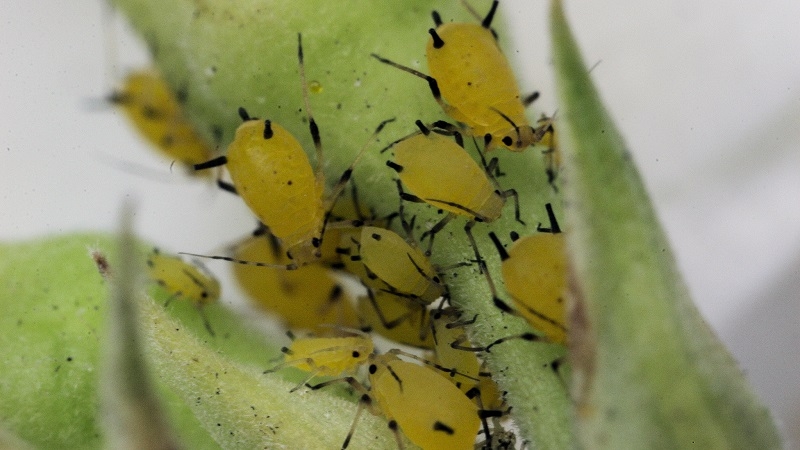
Most often, indoor lemons are affected by aphids, thrips, spider mites, scale insects, mealybugs.
Regularly inspect plants, if pests are found, immediately take measures to destroy them.
Depending on the type of pest, chemical preparations "Aklellik", "Aktara", "Fitoverm", "Intavir", "Decis" and others are effective.
With a slight infection, folk remedies will help:
- 5% laundry soap solution;
- infusion of 50 g of tobacco per 1 water;
- infusion of a head of garlic in 0.5 liters of water.
Lemon disease
Fungal diseases are common: anthracnose, scab, powdery mildew. For treatment, fungicides "Fitosporin", "Kuprozan", copper oxychloride are used.
Lemons also suffer from dangerous infections, such as gommosis. The wounds on the bark of the tree are treated with a 3% solution of copper sulfate until the signs of the disease disappear.
Viruses are widespread: tristeza, leaf mosaic, xylopsorosis. With these diseases leaf apparatus is affected and bark. There are no cures for viral infections. Therefore, if a virus is suspected, the plant is immediately quarantined. If the diagnosis is confirmed, the specimen is destroyed.
Conclusion
The Uzbek lemon has a bright orange skin and an unusual sweet and sour taste. Bred by Tashkent scientists, the hybrid became widespread only in Central Asia. In Russia, it is cultivated in the Ufa Limonary, where you can buy seedlings for home cultivation.
Uzbek lemon in leaving generally no different from other citrus fruits. For active growth and fruiting, light, well-drained soil, constant illumination during the growing season and moderate watering with sufficient fertilizing are needed. Timely screening for pests and signs of disease will help maintain plant health.
Even if it is not possible to achieve fruiting, the Tashkent lemon will be a good addition to the collection of indoor plants due to its high decorative crown and unusual fragrant flowers.